John Ireland: Outside of the Norm
 John Ireland was not your standard movie actor – his background, his looks, his Hollywood career, and his life behind the screen all represented an individual who was outside the realm of the norm. During Ireland’s Hollywood heyday, he was seen in such classic fare as My Darling Clementine (1946) and Joan of Arc (1949), and earned an Academy Award nomination for his performance in All the King’s Men (1949). But the actor’s tenure near the top of the cinematic heap was brief; he spent the bulk of his career in a series of westerns and foreign films, and in the late 1980s, he was compelled to place a newspaper advertisement proclaiming his desire for work. Despite his unfulfilled potential, however, Ireland was highly respected for his unquestionable talent, which he showed to good advantage in his four film noir appearances: The Gangster (1947), Railroaded (1947), Raw Deal (1948), and Party Girl (1958).
John Ireland was not your standard movie actor – his background, his looks, his Hollywood career, and his life behind the screen all represented an individual who was outside the realm of the norm. During Ireland’s Hollywood heyday, he was seen in such classic fare as My Darling Clementine (1946) and Joan of Arc (1949), and earned an Academy Award nomination for his performance in All the King’s Men (1949). But the actor’s tenure near the top of the cinematic heap was brief; he spent the bulk of his career in a series of westerns and foreign films, and in the late 1980s, he was compelled to place a newspaper advertisement proclaiming his desire for work. Despite his unfulfilled potential, however, Ireland was highly respected for his unquestionable talent, which he showed to good advantage in his four film noir appearances: The Gangster (1947), Railroaded (1947), Raw Deal (1948), and Party Girl (1958).
A native of Victoria, British Columbia, John Benjamin Ireland was born on January 30, 1914. When Ireland was still a child, his parents – a horse breeder and a school teacher – moved the family first to San Francisco, and later to Harlem in New York City. While attending summer camps during his teen years, Ireland became a promising swimmer, and after leaving high school, he used his aquatic prowess to perform underwater stunts at a local carnival, where he also worked as a barker.
Ireland’s entry in the acting world came strictly by chance when he went inside the Davenport Free Theater in Manhattan one day, with plans to take in a show. Instead, he found that the company offered free acting training, along with room and board, and a dollar per day. Financially strapped and lacking a direction for his future, the young man signed up with the theater, where he ultimately appeared in a variety of productions, including plays by Ibsen, Shaw, and Shakespeare. He moved on to apprenticeships at companies in Martha’s Vineyard and Arden, Delaware; toured with the James Hendrickson Shakesperian Company in Delaware; and made his Broadway debut in the 1941 production of Macbeth, starring Maurice Evans and Judith Anderson. He also appeared in several other Broadway plays, including A Highland Fling and Richard III, and toured the Atlantic coast with Sylvia Sidney in Jane Eyre.
Despite his prolific performing schedule, Ireland found time during the early 1940s to marry fellow actress Elaine Ruth Rosen, with whom he later had two sons, John Anthony and Peter Ray. The marriage didn’t last, however, and in 1948 the couple divorced, with Elaine charging that Ireland “associated with other women [and] kept late hours without explanation.” (Several years later, in 1952, Elaine would sue Ireland for more than $30,000 in unpaid alimony and child support. A Superior Court judge would rule that the couple’s original settlement agreement was “vague and uncertain,” ordering the actor to pay only $2,207, at the rate of $25 a month.)
Meanwhile, Ireland’s successes on the stage had by now caught the attention of Hollywood, and the actor was cast in 1945 in his first film, Twentieth Century-Fox’s A Walk in the Sun, in which he was third billed as a letter-writing soldier named Windy. Prior to beginning work in the film, Ireland was reportedly encouraged by studio executives to have cosmetic surgery on his rather prominent nose. The actor refused, later revealing that his female fans were attracted to his “king-sized” proboscis.
“A woman in Phoenix wanted me to send her an impression of my nose. I presume she meant in plaster,” Ireland once said. “Almost every letter mentions my ‘virile’ nose and most women ask for profile photographs. I’ve been puzzled by this. . . . Maybe it all started with Cyrano DeBergerac. He had a legend of being quite a guy with the ladies.”
Signing a short-term contract with Fox, Ireland was seen in four features for the studio in 1946, including My Darling Clementine (1946), a first-rate retelling of the conflict between Wyatt Earp and the infamous Clanton clan. The following year, he was seen in back-to-back film noir features for independent companies: Allied Artists’s The Gangster (1947), and Eagle-Lion’s Railroaded (1947). The first was a bleak tale depicting a collection of quirky characters, including Shubunka (Barry Sullivan), a refined but neurotic mobster; Nick Jammey (Akim Tamiroff), an ice cream parlor owner and Shubunka’s nervous right-hand man; and Karty (Ireland), described by one character as “once a first-class public accountant, only the racing bug got him. He’s a goner.” Seen today, the film is fascinating in its depiction of the various characters and separate storylines, but it was panned by critics upon its release; Philip K. Schueuer of the Los Angeles Times found that the feature “glows fitfully but does not coalesce,” the Los Angeles Daily News’ Virginia Wright complained about the “choppy, excessively wordy script,” and the reviewer for the New York Times wrote: “The Gangster is a shoddy example of picture making. Several of the characters talk so deep down inside their throats that at times their speech is incoherent.”
Ireland fared better with his next film noir, the Anthony Mann-directed Railroaded. Here, the actor starred as Duke Martin, a vicious and thoroughly conscienceless hood who is characterized by his violent disdain of women and his penchant for perfuming the bullets of his gun. The film’s action involves Duke’s murder of a policeman during a holdup, his subsequent framing of an innocent local boy (Ed Kelly), and the efforts of the boy’s sister (Sheila Ryan) to prove his innocence. As the sadistic gunman, Ireland offered a vivid portrayal; he is especially memorable in a scene where he asks his boss, Chubb, in a conversational tone, “Did I ever tell you about the guy I killed in Detroit? Worked for him. Didn’t treat me right. We were just talking like this, like you and me are. You know?” Without another word, Duke shoots Chubb, unceremoniously shoves his body to the floor, and steals his cache of money. After the release of Railroaded, Ireland was praised by one reviewer for his “convincing performance,” and the film was hailed by the critic for Motion Picture Herald, who described it as “a story produced on a modest budget . . . which has emerged with a format as smooth as any similar picture in its category.”
The following year, Ireland signed a contract with famed director Howard Hawks, and was cast in the role of Cherry Valance in the epic western Red River (1948), starring John Wayne and Montgomery Clift. Although Ireland’s character was initially a significant part of the story, however, it was later reduced; some sources maintained that Hawks cut the role as a result of Ireland’s drinking on the set. But Ireland’s son, John, later refuted this theory, stating that the actor quit the picture following a dispute with his agent Charlie Feldman.
“He felt he had been lied to and cheated out of money by his agent . . . who, as it turned out, was partnered with Hawks in the company making the film. Hawks was furious when my dad said he wanted out and Hawks told [John] Wayne, ‘that son of a bitch should do the part for nothing,’” Ireland’s son said in a 1997 letter to the Los Angeles Times. “The only reason Cherry was around at the end of the film is that those scenes were shot before my dad’s falling out with his agent and Hawks.”
Ireland followed Red River with his third film noir, Raw Deal (1948). Helmed by Anthony Mann, this feature starred Dennis O’Keefe as Joe Sullivan, a gangster imprisoned for a crime committed by his underworld boss, Rick Coyle (Raymond Burr). After a jailbreak, Sullivan goes after Coyle, accompanied by Pat Regan (Claire Trevor), his faithful moll, and Ann (Marsha Hunt), a social worker he abducts and later falls for. As Fantail, one of Coyle’s underlings, Ireland again essayed a memorable performance, was singled out in Variety for his “sharp portrayal.”
After shooting ended on Raw Deal, Ireland signed a seven-year contract with Columbia, and was cast in supporting roles in such features as The Walking Hills (1949), a low-budget, well-crafted western starring Randolph Scott, Mr. Soft Touch (1949), a rather unconvincing drama with Glenn Ford and Evelyn Keyes; The Doolins of Oklahoma (1949), an above-average Randolph Scott starrer; and Anna Lucasta (1949), based on the Broadway play by Philip Yordan. He also appeared in two stage plays in La Jolla, California, over the objections of studio executives (who reportedly told the actor, “What do you think we want you to turn into – a ham?”)
During this period, Ireland was also loaned to other studios for several films, including Joan of Arc (1949), RKO’s superb account of the life of the French peasant girl who became a Catholic saint; and Lippert’s I Shot Jesse James (1949), which featured Ireland as Bob Ford, the “I” of the film’s title. But his best film of this period – and, arguably, the best of Ireland’s career – was Columbia’s All the King’s Men (1949). Playing a newspaper reporter who recounts the rise and fall of a powerful and ruthless politician (excellently portrayed by Oscar winner Broderick Crawford), Ireland earned an Academy Award nomination for best supporting actor. Although he lost to Dean Jagger in 12 O’Clock High (1949), Ireland’s performance in the film and his subsequent accolades were viewed as the beginning of his rise to cinematic stardom. Instead, the actor found himself promptly cast in a relatively insignificant role in Convicted (1950), starring Broderick Crawford and Glenn Ford. Outraged by what he termed the studio’s “virtual servitude,” Ireland balked at the role and was placed on suspension.
“They told me I was being just another temperamental actor, that I should be ashamed of myself,” Ireland told Los Angeles Daily News columnist Darr Smith. “Of course this refers to the fact that the studio owns us, body, soul, and temperament.” Charging that the studio was “maliciously conspiring” to deprive him of the opportunity to become a star, Ireland petitioned the Superior Court to release him from his contract, and later agreed to give the studio 25 percent of his gross earnings for the next five years.
Meanwhile, although his appearance in All the King’s Men did not result in better screen roles for Ireland, his association with the film did have an immediate impact on his personal life. During shooting of the feature, Ireland began dating co-star Joanne Dru, whom he had first met when both appeared in Red River. Following a whirlwind romance, the couple married on August 7, 1949 (just weeks after Dru’s ex-husband, crooner Dick Haymes, wed the ex-spouse of Errol Flynn). The wedding took place in the Valencia Hotel in LaJolla, with director John Ford’s daughter, Barbara, serving as maid of honor, and actors Gregory Peck and Mel Ferrer standing up for Ireland.
During the next several years, Ireland was seen in a string of westerns, including Vengeance Valley (1951), starring Burt Lancaster and Robert Walker; Red Mountain (1951), where he portrayed the notorious real-life Confederate captain William Clarke Quantrill; Little Big Horn (1951), which centered on a group of calvarymen trying to warn General George Custer of a Sioux ambush; and The Bushwackers (1952), in which Ireland was top-billed as an ex-Civil War soldier. The actor seemed content with his frequent appearances in these oaters, and offered a philosophical view of his roles in the films.
“In New York, it was mostly Shakespeare; here it’s mostly westerns,” Ireland said in 1953. “And in these things I feel like I’m not acting at all; just wandering around in clothes I like to wear, feeling comfortable.”
This stance notwithstanding, Ireland also proclaimed that “an actor’s career is limited,” and in 1953 teamed with cinematographer Lee Garmes to co-direct and co-produce Hannah Lee (also known as Outlaw Territory), believed to be the first western shot in 3-D. Along with stars MacDonald Carey and Joanne Dru, the actor’s younger son, Peter, also had a small role in the film. But Ireland’s initial outing behind the camera was a disappointment; several decades later, MacDonald Carey told The Big Reel newspaper that the film’s limited production values led to its poor showing at the box office.
“[John] played the hero, I played the heavy. We’d get together at night, write a scene, and do it the next day,” Carey said in a 1992 interview. “Unfortunately, it didn’t do well because the 3-D optics were off and everyone left the theater rubbing their eyes.”
The following year, Ireland directed his second feature, The Fast and the Furious (1954), in which he starred as a man on the lam after being framed for murder. The low-budget film was only moderately successful and would be the actor’s last directorial effort, but by now, Ireland had more pressing matters with which to contend. Having appeared since the early 1950s on such television programs as The Philco Television Playhouse, Ireland was tapped for the starring role in a the small screen series, The Adventures of Ellery Queen. Shortly before shooting was to begin, however, Ireland was discharged from the show. The actor promptly filed a $1.7 million breach of contract and slander lawsuit against the program’s producers, Norvin Productions, alleging that the dismissal was based on what the company termed Ireland’s “supposed disloyalty to the United States of America.”
“I am an actor and a director,” Ireland said. “I don’t know anything about politics. I am frank to admit it. My one political activity has been to vote on election day just like any other American.”
Norvin countered that Ireland had been dismissed because he had recently entered into an agreement to endorse a tobacco product in competition of one of the show’s sponsors. Despite this initial stance, the production company settled the suit out of court two months later for a “substantial” sum, and issued a statement that Ireland was “a loyal American citizen who has never committed any act which would reflect unfavorably upon his character or patriotism.”
Professionally, Ireland resumed his screen career with such films as Southwest Passage (1954), in which he was again teamed with wife Joanne Dru; The Good Die Young (1954), a griping crime thriller starring Laurence Harvey (with whom Ireland would develop a lifelong friendship); Queen Bee (1955), starring Joan Crawford as the manipulative, dominating woman of the film’s title; and The Gunslinger (1956), an offbeat western produced and directed by Roger Corman.
Soon after the release of The Gunslinger, Ireland’s personal life exploded into the press again, this time as a result of an incident between the actor and his wife following a Fourth of July celebration at the home of actor Mark Stevens. Initial press reports claimed that during an altercation after the party, Ireland broke his wife’s nose and blackened both of her eyes. Later, Ireland reportedly visited Dru’s beside at Cedars of Lebanon Hospital, and swallowed a handful of sleeping pills.
“He came into the hospital room asking for a reconciliation,” an unnamed source said in the New York Daily Mirror. “He yanked out the bottle of sleeping pills and threatened to swallow them if she didn’t forgive him. He swallowed the pills. The nurse screamed and grappled with him.” Ireland’s stomach was pumped and he was admitted to the hospital along with his wife.
But after the couple’s release from the hospital, Dru insisted that she had been hurt as a result of a minor car accident, and Ireland claimed that he’d inadvertently taken too many sleeping pills during an airplane flight earlier on the day of the incident. Despite these assertions, Dru announced less than a week later that she and Ireland had separated.
“We feel we can work out our problems better if we are away from each other for a few weeks,” Dru told New York Daily News columnist Florabel Muir. “And I need absolute rest for a few days to pull myself together.” According to Dru, however, the trial separation”only served to convince her that their marriage was a failure,” and in November 1956, the actress filed for divorce. (Three years later, in 1959, Ireland would make headlines again when he became embroiled in a widely publicized affair with then 16-year-old actress Tuesday Weld. The 45-year-old actor told the press that he would ask Weld to marry him “if there wasn’t such a difference in our ages . . . that and her mother are the only things that stop me.” Ireland was later linked with several other starlets, including Natalie Wood, but in 1962, the actor would settle down for a third try at marriage. Wife number three would be 26-year-old Daphne Cameron, the ex-wife of oil millionaire George Cameron. The couple would remain together until Ireland’s death.)
During the next several years, Ireland’s screen career witnessed a steady decline, but he was seen in a handful of memorable features, including Gunfight at the O.K. Corral (1957), in which he turned in a fine performance as outlaw Johnny Ringo; and Spartacus (1960), a sweeping epic about the slave rebellion that swept Rome in 73 B.C. Ireland was also seen during this period in the last of his film noir features, Party Girl (1958). Here, Ireland was fourth-billed as Louis Canetto, a gunman for big-shot mobster Rico Angelo (Lee J. Cobb). Set in Chicago during the 1930s, the story focused on Thomas Farrell (Robert Taylor), a corrupt mob lawyer who is determined to extricate himself from his lifestyle after falling for a showgirl (Cyd Charisse). As Rico’s sleazy henchman, Ireland had little to do, but he was particularly memorable in a scene in which he tries to seduce Farrell’s girl and gets beaten with a hairbrush for his troubles. His performance in the film earned only lukewarm reviews, however; although the Los Angeles Times’ Philip K. Scheuer included Ireland in his mention of the “good cast,” another critic referred to the actor’s “routine” portrayal of the gangster, and he was labeled merely “adequate” in the New York Times.
With the onset of the 1960s, Ireland was seen in a series of foreign productions, and such thrillers as I Saw What You Did (1965), which re-teamed him with his Queen Bee co-star, Joan Crawford, and introduced a new catchphrase into the popular culture. “It became a little fad for everybody to call up somebody [and say ‘I saw what you did’],” Ireland said in a 1992 interview in Classic Images.
In addition to his screen work during the 1960s, Ireland landed regular roles on two television series, The Cheaters and Rawhide, and was seen in guest spots on such programs as Alfred Hitchcock Presents, Gunsmoke, and The Iron Horse. The next two decades would see him in a variety of television movies, including Marilyn: The Untold Story (1980), in which he portrayed veteran Hollywood director John Huston. Ireland was also part of the cast of the short-lived series Cassie and Company in 1982; continued appearing in numerous foreign productions; and was seen in such forgettable American features as The House of Seven Corpses (1974) and Satan’s Cheerleaders (1977), both cheapie horror films co-starring John Carradine; The Shape of Things to Come (1979), an unsuccessful remake of the 1936 science fiction classic Things to Come; and Thunder Run (1986), a horrid actioner notable only as the final screen appearance of actor Forrest Tucker. The sole bright spot during this part of Ireland’s cinematic career came with his appearance in Farewell, My Lovely (1975), a well-done adaptation of the Raymond Chandler novel, starring Robert Mitchum and Charlotte Rampling. Also during this period, Ireland opened a restaurant – the aptly named “Ireland’s” – in Santa Barbara.
By the late 1980s, Ireland was desperate for work. Although he continued to sporadically guest in such television series as the Fall Guy and Airwolf, the actor was seeking “real” jobs. (“I don’t consider that acting,” he said of the television gigs.) In a last-ditch effort to jumpstart his flagging career, Ireland in March 1987 placed a full-page, two-color advertisement on the back page of The Hollywood Reporter. Setting the actor back nearly $2,000, the ad simply read: “I’m an actor. PLEASE . . . let me act.”
“It was part humorous and part serious,” the 73-year-old actor said in the Los Angeles Times. “I was watching A Chorus Line the other day and there’s a song in which a character says, ‘I wanna dance for you.’ Well, I wanna act for you, and I’m just not getting the opportunities. I felt it was time to do something about it.”
After placing the advertisement, Ireland reported that his “phone hasn’t stopped ringing,” and a short time later was cast in Bonanza: The Next Generation (1988), playing Capt. Cartwright, the brother of Ben Cartwright. (Actor Lorne Greene, who originated the role of Ben in the popular TV series Bonanza, was signed for the TV movie, but died shortly before production commenced. The movie was intended to serve as the pilot for a weekly syndicated series, but the program never materialized.) Ireland also appeared in such television features as Perry Mason: The Case of the Lady in the Lake (1988), and on the big screen in Sundown: The Vampire in Retreat (1989), a serio-comic horror story, and Waxwork II: Lost in Time (1992), a fantasy-horror film in which Ireland played King Arthur. But Ireland’s search for quality acting parts abruptly ended when, after a brief illness, the actor died of leukemia at the Santa Barbara Cottage Hospital. He was 78 years old.
While well-respected and extensive, John Ireland’s career was also unusual and often frustrating, consisting primarily of supporting roles in major films, or leading roles in run-of-the-mill, low-budget features. This conundrum notwithstanding, Ireland managed to distinguish himself in numerous films, demonstrating an unquestionable talent and far-reaching versatility in such features as Railroaded, The Bushwackers and, of course, All the King’s Men. Possessing a unwavering devotion to his craft, Ireland continued to perform until his health prevented him from doing so; an anecdote told by John Sturges, who directed Ireland in two features, provided a fitting illustration of Ireland’s determination to act. According to Sturges, he was in the process of casting the 1949 western, Walking Hills, when he encountered Ireland.
“I saw him walking on the sidewalk and he said, ‘I’m starving – I need a job,’ and I said, ‘You’ve got it!’ because I knew what he could do,” Sturges said in a Big Reel interview shortly after the actor’s death. “Likeable guy. And a very good actor. I’ll miss him.”















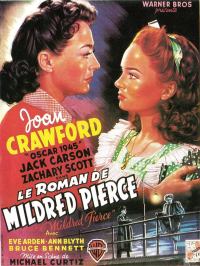




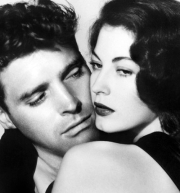




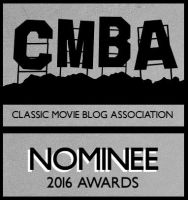








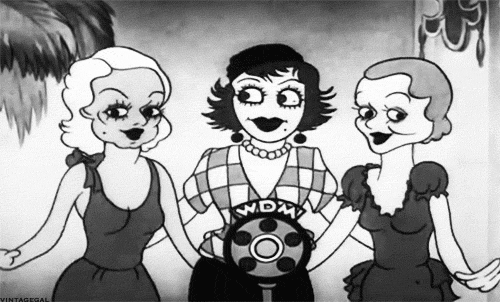
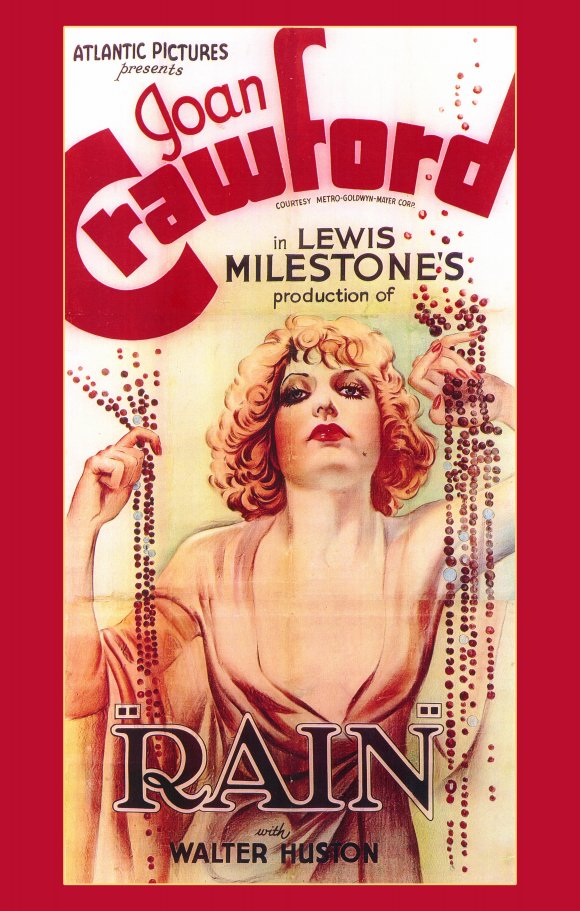

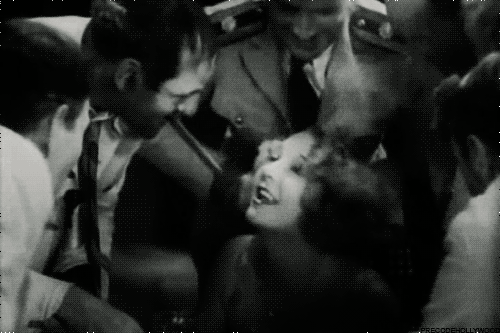
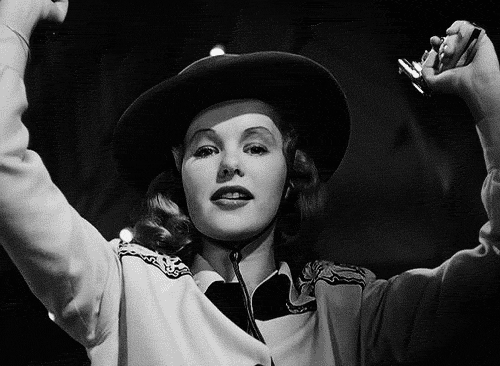

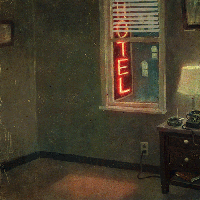
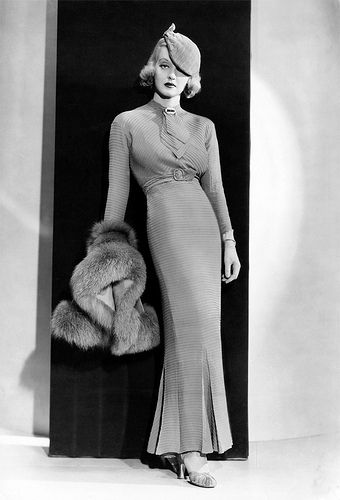


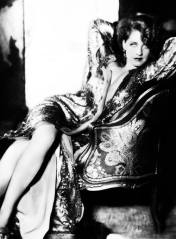
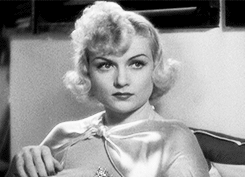





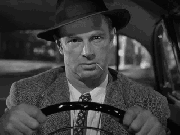
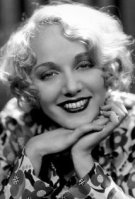
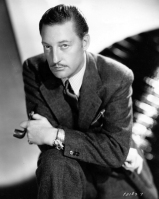
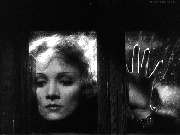


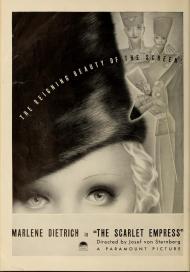
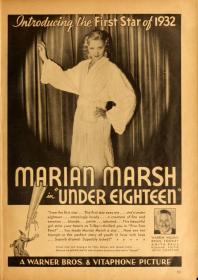
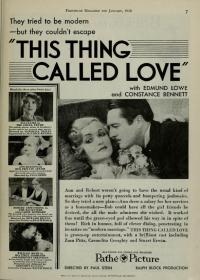


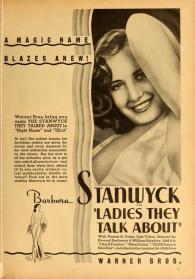


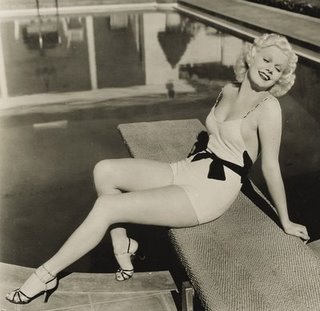




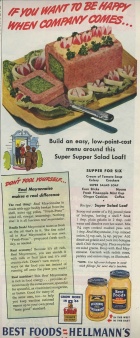
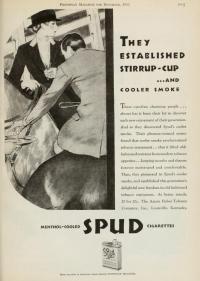

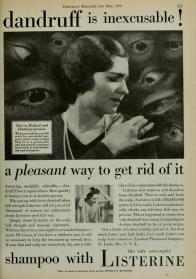
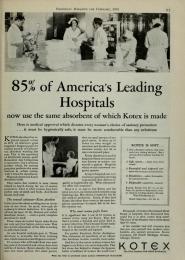
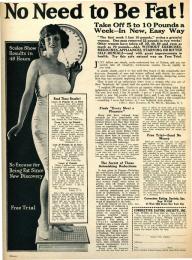


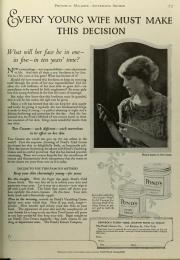
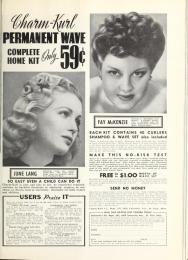
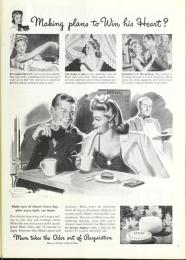


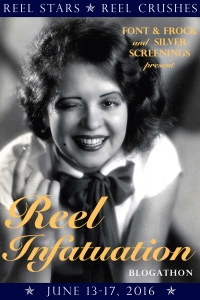

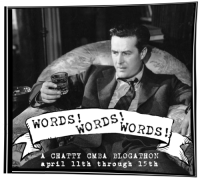

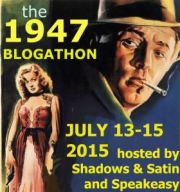
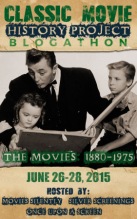


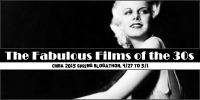
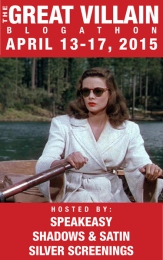

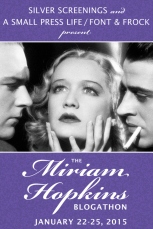
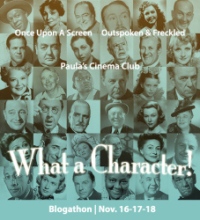
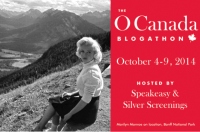



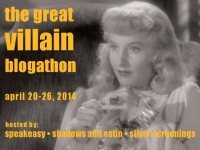
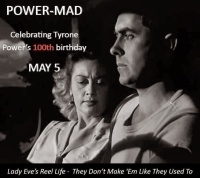


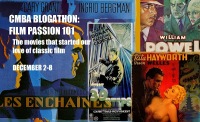
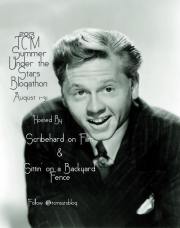
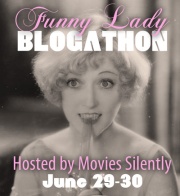


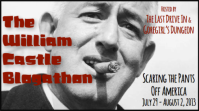

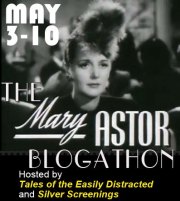


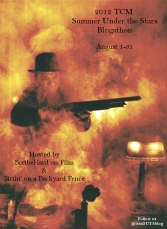


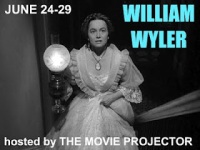

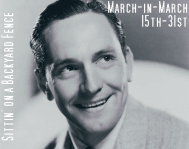
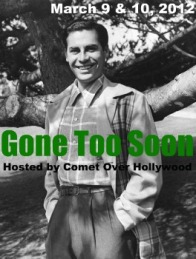


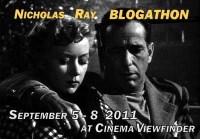

I knew John and did a play with him in 1985. I’ll not make any further comments on this forum but if we can find a way to communicate directly will fill you in on the experience.
I first saw John Ireland in a matinee showing of FAREWELL, MY LOVELY with my dear late mom, a longtime John Ireland fan herself. I’ve liked him ever since. From the films and TV shows I’ve seen him appear in, including his Oscar-nominated performance in ALL THE KING’S MEN, I thought he was a terrific actor, though I get the impression he might perhaps also been one of those guys who can’t quite get out of his own way. In any case, his performances were always worth watching.
However, I couldn’t help chuckling over the fixation on Mr. Ireland’s allegedly “king-size proboscis.” My favorite contemporary actor, Oscar-winner Adrien Brody, has John Ireland beat by a mile! 🙂 In any case, both Brody and Ireland have prominent, noble noses that fit their faces perfectly, in my opinion!
Hi, Dorian! Thanks for your comments! I’ve always enjoyed Ireland’s performances, as well — and I certainly agree that his personal life had some aspects to rival his darkest noirs! (I’m a Brody fan, too — loved him ever since I saw him in Liberty Heights back in the late 1990s. Have you seen it? It’s great!)
Delighted to hear that you’re an Adrien Brody fan as well as a John Ireland fan! Our fellow Brody aficionados playfully call ourselves “The Brody Bundh.” :-)! And yes, I did indeed see and enjoy LIBERTY HEIGHTS. In fact, I whipped up a review of LH on the IMDb a few years back. If you’re interested, here’s the link:
http://www.imdb.com/title/tt0165859/reviews-52
Now I’m wishing John Ireland was still around to make a movie with Adrien Brody! Truly, Shadows and Satin is the blog where the elite noir lovers hang out! 🙂 Keep those great posts coming!
I always liked Ireland’s voice, and he knew how to deliver a good line.
This post was very interesting. I thought it was odd the way his character in “Red River” disappeared from the story so abruptly.
Thank you, Helen! I thought John Ireland was a really interesting actor — and quite underrated. I’ve only seen a few of his performances outside of his film noir features, but he always catches my attention.
I WORKED WITH JOHN IRELAND IN A THOUSAND CLOWNS AND I LOVED HIM HE WAS A GOOD FRIEDND AND A GREAT ACTOR AND I’LL ALWAYS MISS HIM. GREGG WEIR
What an awesome experience that must have been, Gregg (if I may). Please feel free to share any other memories you have of John Ireland — I always thought he seemed like he was a cool guy off screen.
Hi
John Ireland was just a great person and actor to work with and Don Barry also. A thousand Clowns was a great show and we had a lot of fun together all the time,there so much more I can say but it would take time. I would love to write a story about working with John and other actors including myself,I did many shows when I was young including Oliver on Broadway. I’m writing a new book maybe next year about my Girlfriend and myself she died from bad nursing homes and a very uncaring Hospital so the story will be great. I hope it turns out to be a movie also?
I’m sorry to read about your girlfriend’s experience, Gregg — how great it would be, though, if you wrote something about your experiences as an actor.
I’m going to write a book about my experience as a actor working with stars like john Ireland but it’s mainly about my girlfriend’s life with M.S, and her son.I hope it will turn out to be a movie one day, My
girlfriend went through so mush before she died the world has to know.I’m still in the show-biz field. playing Keyboards for this great Christian Rock Band Miracle Maker with many video’s and CD’s. We just came out with a new CD in July called Miracle Make-Invisible.
Best of luck with your book, Gregg — and your new CD!
Thank you for writing with such integrity and attention to detail about my father, John Ireland. He was truly a remarkable, kind, funny and generous person. And the most loving dad anyone could wish for! He would be thrilled that he is still touching people’s lives with the craft he loved so much.
Dear Ms. Ireland:
What an honor to have you visit my blog and read my post about your very talented father. It is both personally and professionally rewarding to know that you appreciate what I wrote — your father sounds like he was a wonderful person and a wonderful dad!!
Many thanks again for your kind words…Truly appreciated.
My best to you,
Daphne Ireland
I loved working with your father in A Thousand Clowns, he was someone I looked up to and he was just great. Do you know were John Ireland Jr is? he worked with me also with his dad. Please let me know and god bless you and I will always have a special place in my heart for John.
Hi Gregg,
Thank you so much, how nice to hear from you. I know my dad adored doing “A Thousand Clowns”. My brother John is very well, thanks for asking. I will certainly pass this on to him.
All the best,
Daphne
Love to you Daphne, my most beautiful wedding flower girl😍🥰
Marta LaTourette Turpin
It was a joy, Marta – thank you so much for your comment! I also wrote about your father at greater length in my book, Bad Boys: The Actors of Film Noir. I hope you will feel that I did him justice there, as well. Please feel free to contact me at gypsynoir@aol.com for more information.
Hello, I am so sorry I just noticed your comment – months later! – I think intended it for me? I am so happy to hear you’ve included my dad in your book. I am very much looking forward to reading it! I’ll send you an email soon so we can connect. Many thanks for all you do to keep the classic film magic alive; I often forward your emails to my mum and other friends, who ADORE the posts! Noirvember is a big hit!! Sending all best wishes for a Happy New Year,
Daphne Ireland
Marta, I just saw this! I LOVED being your flower girl…the only wedding I’ve ever been in to this day 🙂 XX
I’m watching him on an episode of Little House on the Prairie “Little Girl Lost”. I didn’t know he has done so many movies. I will be looking for him in the future. I think he was very handsome. Don’t understand the fuss over his nose.
I’m with you, Susan!
How thrilling is to read something written by DAPHNE IRELAND, wish I could meet her sometimes, even though I do not live in the United States. I have always loved the great JOHN IRELAND and I am always remembering his films, as well as trying to complete his filmography. As far as today, I know he was in 114 films. I hope being right. Anyhow, I will always love him and admire him. Besides, somewhere I read he was a good friend of another of my favorites, Robert Mitchum. God bless them for so many happy hours they have given us. Thanks and all the best, Alvaro Pelayo, Chile.
John Ireland has always been a favorite of mine as well, Alvaro — not to mention Robert Mitchum! They were both versatile and talented, and have left us so many outstanding performances to enjoy! Thank you so much for reading, and for your comment!
Hello, Alvaro! Thank you so much for your very kind comments! I am thrilled to hear you’ve enjoyed my dad’s movies, and to know he’s reached people from around the world. This would make him so happy! And yes, he was very friendly with Robert Mitchum. Bob and his wife were lovely, and we would see them often since they were neighbors, too. He was also such a talented actor! I send all best wishes to you from the States, and blessings for a very happy and healthy New Year – Daphne Ireland
I am sorry, I should have said I whish I could meet her sometimes. Sorry
Oh, you are so kind! Thank you and blessings to you. All the best, Daphne Ireland